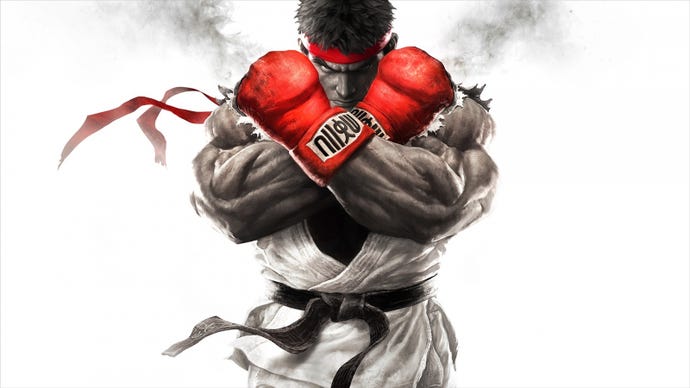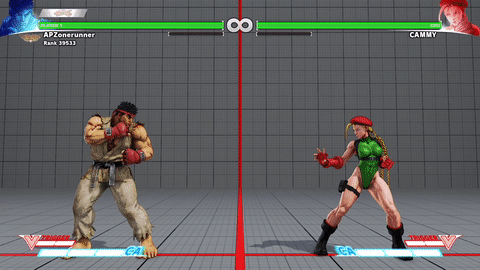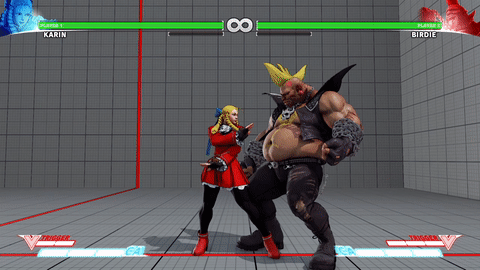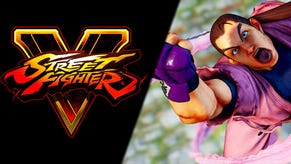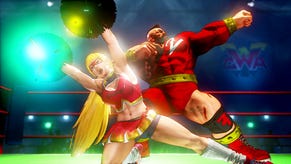Street Fighter 5 guide: all moves, all characters, tips and tactics
Getting into a new fighting game can be a little daunting, but we’re here to help. Street Fighter 5 is arguably the most accessible and easy to get into entry in the series, but if you can’t remember those damn move inputs or just need some help understanding the core mechanics, this page is for you.
Street Fighter 5 guide: all moves, fighting tips, best arcade sticks and more
- Fighting Essentials & Basic Mechanics - this page, scroll down!
- The Best Control Options: Fight Sticks, Fight Pads and more
- Fight Money Guide - how to earn FM fast
- SF5 Missions Guide: how to complete every weekly mission
Character Moves and Tactics
- Ryu
- Chun-Li
- Ken
- Cammy
- Nash
- Karin
- M. Bison
- Birdie
- R. Mika
- Rashid
- Vega
- Necali
- Zangief
- Laura
- Dhalism
- F.A.N.G.
- Alex
- Guile
- Balrog
- Ibuki
- Juri
Street Fighter 5: Fighting Essentials & Basic Mechanics
The Buttons
While Street Fighter V is coming to the PlayStation 4, many players will be playing on controllers quite different to that – including Arcade Sticks, FightPads, and even Xbox controllers on PC. As such, this guide lists inputs as Light, Medium, Heavy and so on (represented in this guide as LP, MP, HP, LK, MK, HK) – but here’s how they translate to the PS4 pad:
While many will tell you only a stick will do, pads are perfectly valid for Street Fighter. The EVO 2014 Street Fighter IV champion used a PS1 pad – play with whatever is comfortable. If pad isn’t working for you, though, do consider looking into a stick or a more dedicated FightPad. We explain your options there in this section of the guide.
Blocking
One of the easiest stumbling blocks for newer players in the world of fighting games is simply forgetting to block. In Street Fighter V, blocking is accomplished by holding away from your opponent – either Back (standing block) or Down and Back diagonally (crouching block).
Some moves hit low, and so are best blocked crouching. Some other moves can knock you out of a crouching block, so be careful. When blocking, remember you can then activate a V-Reversal on a foe, described below, to turn the tables on them.
Dashing
A hugely important part of Street Fighter that’s often overlooked by newcomers are dashes. By Double Tapping the stick either forwards or backwards, your character will do a quick dash in that direction.
A dash backwards can often take you out of the range of an attack, while a dash forwards can bring you within range for a grab or another close-range move – so learn this mechanic and use it wisely.
The range of dashes varies from character to character, so be sure to get acquainted with the distance your character can dash in training mode.
EX Moves & the EX Meter
Almost every Special Attack in the game has an ‘EX’ version available. An EX move costs one of the three segments of your Super Meter (the blue bar at the bottom of your side of the screen that builds as you fight) but is a more effective and impactful version of that movie. An EX Hadouken travels faster, hits twice, knocks down and does more damage, for instance, and can be used to catch your opponent off-guard.
Here’s an example of Ryu’s Hard Punch Fireball and the EX version below:
EX moves are executed by doing the normal move motion while pressing more than one attack button at the end. For instance, while a Hadouken is a Quarter Circle Forward + Punch, an EX Hadouken is performed with a Quarter Circle Forward and any two Punch buttons.
If you let the EX meter build all the way, you can spend all three bars to perform a ‘Critical Art’, better known as a ‘Super’ move. These are described in each character’s move set.
V-Skill
Rather than one universal mechanic for Street Fighter V, Capcom has given each character a unique skill that can be used simply by pressing both Medium buttons together. This is unique for each character, so you’ll learn more about this on each character’s move list.
V-Reversal
New for Street Fighter V is the V-Reversal, a move that allows you to hit back at an aggressive opponent. While blocking their attack, simply tap forwards out of your block and press all three punch buttons – your character will ‘reverse’ their ongoing attack and knock them down. Be careful to get the timing right, as if you miss you will be letting your guard up and inviting in an attack.
V-Trigger
V-Trigger is the new system that replaces ‘Ultra’ moves, or the ‘Revenge’ meter. Taking damage fills this meter (the red bar at the bottom of your side of the screen that builds as you fight), and when it’s full you can enter a powered up state. This is unique for each character, but broadly speaking makes them more deadly and powerful – hopefully allowing you to take revenge for that damage taken.
Throws
All characters have the ability to throw when close to the opponent by pressing LP and LK together. If you hold back while doing this, you will attempt to throw the opponent backwards, thus reversing your direction on the screen. A few characters can also throw while airborne, and that is noted in their individual move lists.
Throws can be broken out of by pressing LP and LK together at the same time your opponent tries to throw you. A glimpse at a successful throw and a broken throw can be seen below, to give an idea of timing:
Remember – any time your opponent is up close, chances are they’re at least thinking about throwing you!
Quick Rise & Back Rise
At some point, you’re going to screw up, and you’re going to end up on your ass. When you do, you’re faced with a choice: remain on the ground until your character naturally stands up or perform what’s known as a ‘quick rise’. A quick rise does what you’d expect – you get up more quickly, which can either put you back into the action or put you back in danger depending on when and how you use it.
There are two types of quick rise:
- In Place (As you hit the ground: Two Punch Buttons OR Down) – This makes your character get up where they fell. Simple.
- Away (As you hit the ground: Two Kick Buttons OR Back) – Your character will back up from where they landed, then quick rise.
The only time you can’t quick rise is after being hit with a Critical Art (Super) attack. If you’re thrown, you can only quick Rise in place. Understanding and using this mechanic can save your bacon from eating a nasty combo right as you stand up.
Stun & the Stun Meter
Getting hit in Street Fighter V doesn’t just damage your health meter – it damages your ‘stun’ meter too. Even blocking attacks makes this bar rise, though much more slowly. When this much smaller meter (found directly beneath your health bar) is filled, you go into a stunned state and are powerless to block or do anything as your opponent gets a nasty free hit on you.
The Stun Meter naturally depletes once you’re not taking damage off the enemy or blocking their attacks. If you notice you’re on the verge of being stunned, it’s a good idea to back off for a few seconds and wait for the bar to deplete.
The Motions
Throughout this guide you’ll see motions referred to in two ways – Street Fighter style (eg Quarter Circle Forward + Punch) and Mortal Kombat style (Down – Forward – Punch). Either of these will work well enough, but the key is to take your time practising these motions. Forward will always refer to ‘towards your opponent’ regardless of what side of the screen you’re on.
Break moves down and think of your stick or D-Pad like a clock; a quarter circle forward is swiping 6pm to 3pm if you’re facing right.
Charge Moves
Some moves, ‘Charge Moves’, require you to hold the stick in a certain direction and then press in another direction with a button to execute.
Beginners should practice this with Chun-Li’s Fireball, which is Charge Back, Press Forwards, then Punch. To Charge correctly to begin with, try holding back for around one second, then press forwards and punch. It should come out. The only way to learn the timing discipline for this is to practice, so hit up training mode.
Tips for Beginners
- Take it slow: Street Fighter is forgiving with its inputs, and when first learning to throw a fireball or uppercut, it’s perfectly valid to input your commands more slowly. You’ll get faster with practice.
- Don’t be afraid of training mode: As tempting as it is to just jump online or into arcade mode, try to master the moves of your character of choice before fighting even against the AI. Once you can reliably perform their most basic moves, and then practice against a moving opponent.
- Use the stage to your advantage: Street Fighter doesn’t have stage hazards, but it does have corners. One of the most dangerous situations to put your opponent in or to be in is to be in the corner of the stage with them applying pressure on you. Aim to put your opponent in the corner and keep them there – and if you’re getting backed into the corner, try to reverse that as fast as possible.
- Don’t panic: Even if you’re getting smashed to pieces, the worst possible thing you can do is panic, which often leads to desperate mashing – which more or less never works. If you’re getting lit up, try to block, back off, and reset the situation.
